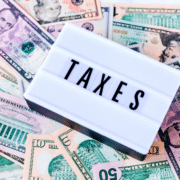The return on investment for selling off an asset held is known as capital gains:
- Long-term ones involve assets held for more than a year.
- Short-term ones involve assets held for less than 12 months.
The duration of an asset hold determines the taxation rate at which gains from its sale attract. As a general rule, capital gains attract favorable tax rates than other income streams. However, the duration that an asset is held determines just how favorable the taxation terms are: long-term gains taxation is way below the short-term ones.
Long-term capital gains tax rates 2021
Investment instruments that attract capital gains are assets held for more than 12 months. Investing in such assets helps to reduce their tax burden since they attract much more favorable terms than short-term investment instruments. The net capital gain for taxation is a product of the buying value of the asset. But less any depreciation, selling costs of the asset, and any cost incurred to add value to the asset. It is known as the asset basis. Any investment assets received as gifts transfer the asset basis from the owner to the individual gifted.
So the Biden administration talks to increase the capital gains tax for high-income earners, with annual incomes of over $1000000. The proposed rate is 39.6%, in addition to the current surtax for high-income earners for their investment incomes of 3.8%.
|
The rates on long-term capital gains |
||||
|
Tax rate |
Taxable income: single people | Taxable income: couples filing jointly | Taxable income: household head |
Taxable income: couples filing separately |
|
0% |
$0-$40,000 | $0-$80,000 | $0-$53,600 |
$0-$40,000 |
|
15% |
$40,001-$441450 | $80001-$496600 | $53,601-$469,050 |
$40,001-$248,300 |
|
20% |
$441,451 and above | $496601 and above | $469,051 and above |
$248,301 and above |
These rates are not cast in stone. Their review is on an annual basis making it paramount to continuously update the prevailing rates to avoid filing the wrong returns, attracting hefty fines.
Advantages of long-term capital gains
These gains attract favorable tax rates than other investment incomes. For example, a person earning $60000 in a year can buy shares worth $500 and sell them after 20 months for $850, netting a $350 capital gain. The $350 capital gain tax rate is 15%, $52.5, translating to a net gain of $297.5.
However, supposing the same investor sold the stocks after only nine months and even at a higher value of $900. The gains then are short-term subject to taxation at a nominal income tax rate, 22%. Thus, the gross capital gain would be higher at $400, but the tax burden is also higher at $88.
This type of gains in specialty accounts such as 401k, SEP IRA, and Roth 401k attract taxation on withdrawal. As such, the deferred tax provides a large capital base for reinvestment.
Short-term capital gains tax rates 2021
Short-term capital gains have no tax breaks. In essence, selling off investment assets before a 12-month lapse might result in a heavier tax burden. Short-term capital gains attract interest at the standard income tax rate, taxed at the current tax bracket.
|
The rates on short-term capital gains |
||||
|
Tax rate |
Taxable income: single people | Taxable income: couples filing jointly | Taxable income: household head |
Taxable income: couples filing separately |
|
10% |
$0 to $9,875 | $0 to $19,750 | $0 to $14,100 |
$0 to $9,875 |
|
12% |
$9,876 to $40,125 | $19,751 to $80,250 | $14,101 to $53,700 |
$9,876 to $40,125 |
|
22% |
$40,126to $85,525 | $80,251 to $171,050 | $53,701 to $85,500 |
$40,126to $85,525 |
|
24% |
$85,526 to $163.300 | $171,051 to $326,600 | $85,501 to $163,300 |
$85,526 to $163,300 |
|
32% |
$163,301 to $207,350 | $326,601 to $414,700 | $163,301 to $207,350 |
$163,301 to $207,350 |
|
35% |
$207,351 to $518,400 | $414,701 to $622,050 | $207,351 to $518,400 |
$207,351 to $311,025 |
|
37% |
$518,401 and above | $622,051 and above | $518,401 and above |
$311,026 and above |
Short-term gains, in some instances, result in a higher tax bracket and even heavier tax burdens. It is therefore prudent to avoid short-term capital gains at all costs, where possible.
What if your capital gains are negative?
Not all investment assets result in profits. The beauty of capital gains is that when negative, they help offset the tax burden of those that are positive and the individual income tax burden. However, the IRS has a cap on the yearly offsettable capital losses, $3000.
For example, an individual with an annual income of $63,000, with two different investment assets that bring in $7500 in gains and $14,800 in losses, has a net loss of $7300.
This loss is utilizable to offset the tax burden for the next three years, assuming there are no more gains or losses:
- First-year subtract $3000 from $63,000 to pay a tax burden of $60,000
- Second-year remove $3000 from $63,000 to pay a tax burden of $60,000
- Third-year subtract $1300 from $63,000 to pay a tax burden of $61,700
Capital gains special rates and exceptions
By now, it is clear that not all capital gains are treated equally. The same is true for long-term capital gains. Capital gains attracting different taxation stem from:
-
Collectibles
The sale of any asset classified as a collector’s item attracts a flat rate of 28% regardless of the income level. These are items such as coins, precious metals, works of art, stamps, jewelry, and antiquities.
-
Small-business stock
Whereas the holding period for long-term capital gains is more than 12 months, qualified small company stocks achieve the same status after five years. In addition, any capital gains from small business stock worth more than $10 million attract taxation at a 28% rate.
-
Real estate investment
Investment in real estate attracts taxes depending on the type of residence that has capital gains:
-
Owner-occupied property
The first $250,000 gain for a single person and $500,000 gain for a couple filing jointly attract no interest. The condition attached to this treatment is the property to be the principal residency and the seller living in it for at least two years of the five leading to its sale. Losses from this sale are also not tax-deductible.
-
Commercial property
Investors in real estate are allowed to deduct depreciation and maintenance costs from their gross taxable income. However, if the deducted amounts are recovered during selling, they attract taxation at a 25% flat rate.
How to save on capital gains tax
- Don’t sell in the short term
As with most investment advice, try to use it in the long run. The sale of short-term property, plant, and equipment mean that you will be taxed at the ordinary income rate.
- Don’t waste time when it comes to property
Buying a house can be a significant investment. Staying in this home for at least two years within five years entitles you to exclude capital gains up to $ 250,000 from the sale of this home. To become eligible, you cannot already deduct the other house from your taxes for the two years before the sale. The exemption increases to $500,000 if you are married and filing jointly.
- Use your retirement accounts
You do not need to pay taxes on sales made under tax-free accounts such as the Roth IRA. In deferred tax accounts such as 401k, you will not pay income tax on the amount you earn and deposit in the deferred tax account or the amount earned in the account. But you will pay tax on the amount withdrawn on retiring.
- Pay attention to your losses
The ability to carry forward your losses to future years means that you can receive tax breaks for years to come. So keep a close eye on your failures.
Your plan is unique to you
As with all personal finance advice, the most sensible approach to capital gains will depend on who you are and your financial goals. Especially when it comes to taxes. So it is better to check with your tax or financial advisor before making any drastic decisions.
























Comments